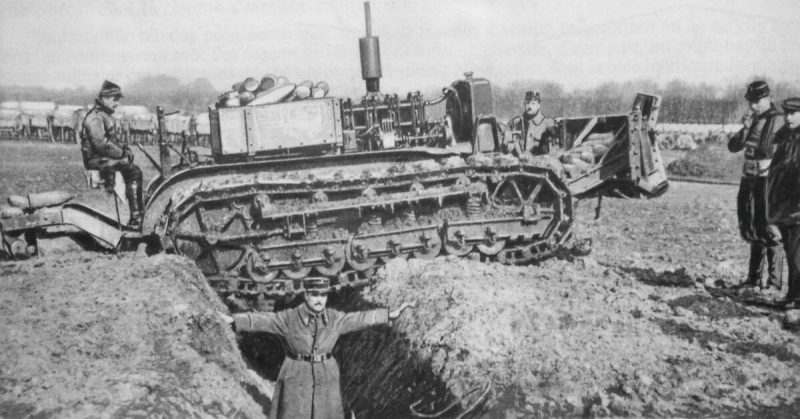The beginning of armored weaponry dates back to the days of the First World War when a stalemate occurred on the Western Front due to trench warfare. To try and break the impasse, both sides sacrificed hundreds of thousands of men who gallantly charged; often for nothing.
Before the war, caterpillar tractor designs were in development for agricultural use. French mechanic Charles Marius Fouché and engineer Édouard Quellennec were pioneering researchers in the field. It was not long before the military noticed their potential.
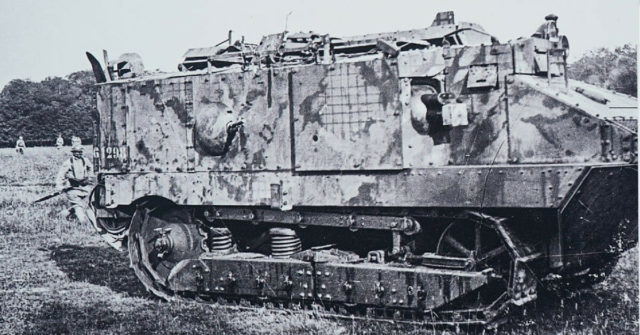
In 1915 The Schneider Company, which at the time was the leading French iron and steel mill, was asked to create a tractor capable of towing heavy artillery. That same year, it was taken a step further when Quellennec gave a suggestion to Eugene Brillie, a leading engineer at Schneider. He believed the tractors should also be armed to serve as assault vehicles intended to create passages through barbed wire and provide covering fire for infantry charges.
The “Tracked offensive machine” based on a Baby Holt design (Holt being the American manufacturer of tractors) had gone through a series of trials before it entered service in 1916. Based on those tests and under the supervision of Colonel Jean-Baptiste Eugène Estienne, the project was given the green light, although several improvements were made along the way.
An order arrived at the Schneider company for 400 units to be produced as soon as possible. Colonel Estienne later became the key figure in organizing the armored units of the French Army.
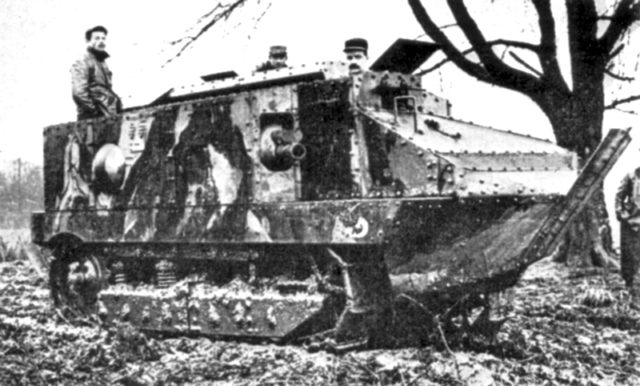
The Schneider CA 1 would not be classified as a tank by today’s standards, as it did not have a turret. It was more like a steel box on caterpillars, armed with a 75 mm Blockhaus Schneider gun protruding from a hole located in the front right-hand corner of the vehicle.
The cannon was a version of a trench mortar adapted to fire from a fixed fortified position with the help of a recoil compensator and a gun shield. Together with two 8 mm Hotchkiss Model 1914 machine guns protecting both flanks, the Schneider CA 1 was supposed to even the odds in attacking well-fortified enemy positions.
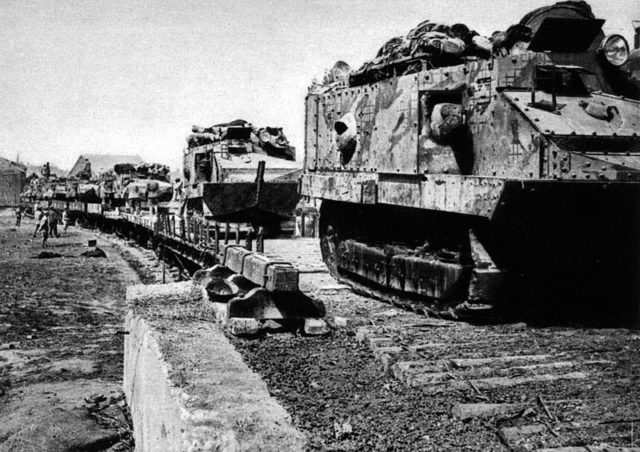
As a six-man crew was required to operate the tank, the interior was cramped. Although we cannot imagine modern warfare without tanks, those were the days when such machines could only be found in futuristic sketches and science fiction novels.
The tank ran on a domestic-produced Schneider 4-cylinder petrol 60 hp (45 kW) engine which could achieve a modest speed of 8.1 km/h (5.0 mph). Most important was its ability to cross the cratered landscapes of the Western Front. However, after a couple of disastrous attempts to put the tanks to good use, the French were questioning the idea of this kind of machinery.
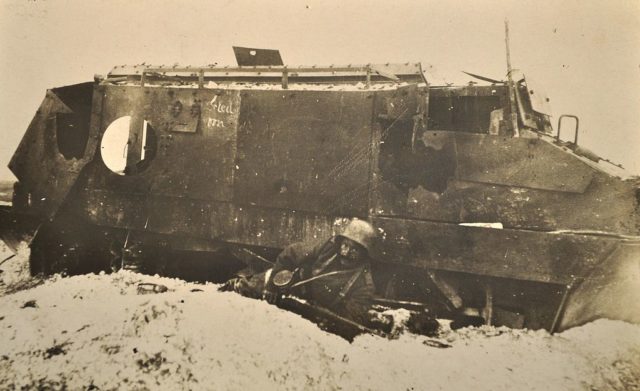
Nevertheless, by 1918, these armored fighting vehicles had grown to 245 operational units. Schneider was intended to be replaced by the famous Renault FT model. Unfortunately, there were not enough of those tanks operational, so the French armored forces had to rely on the almost obsolete CA 1.
During the German Spring Offensive in March 1918, the Schneider tanks lived their glory days, as they actively participated in repelling the German advance.
After the war, the Schneider CA 1 was put in reserve and saw limited action in Spain during the Moroccan crisis in the 1920s and the early days of the Spanish Civil War.
